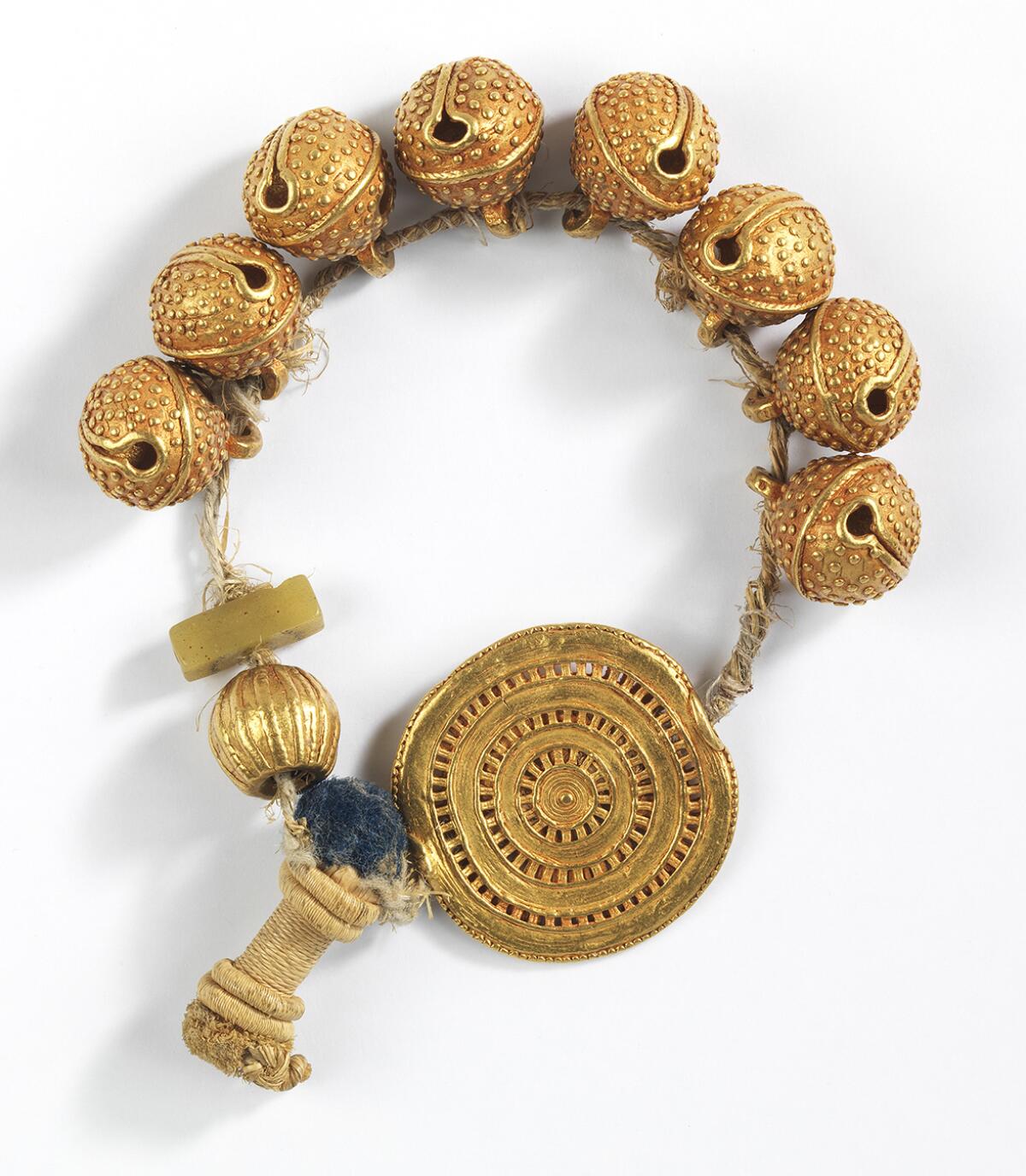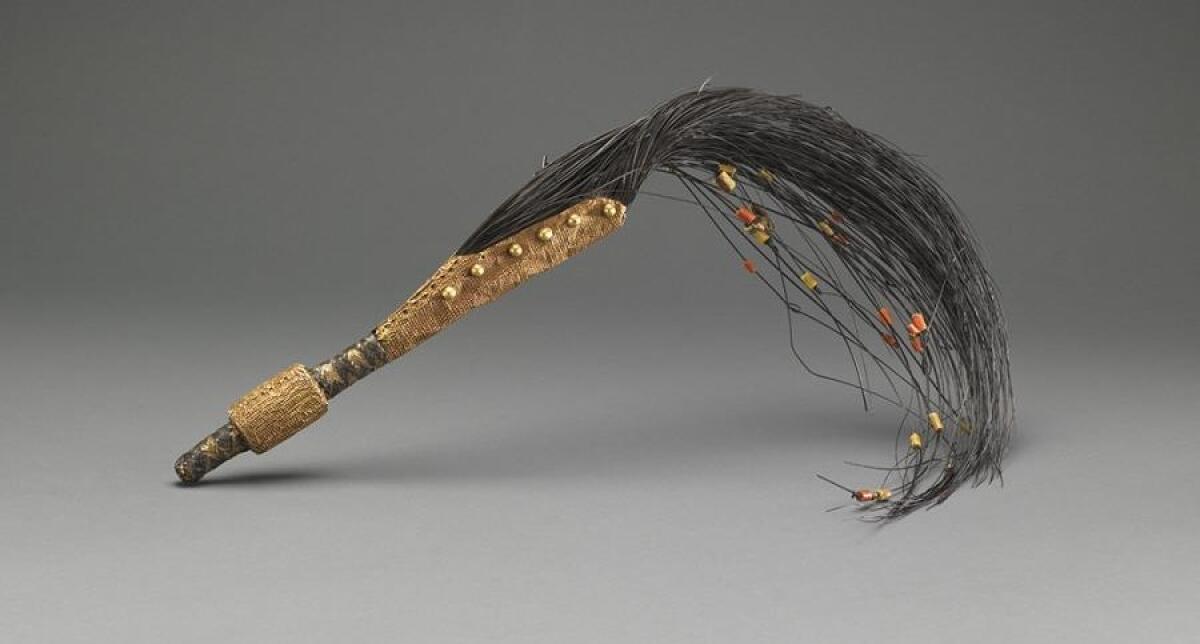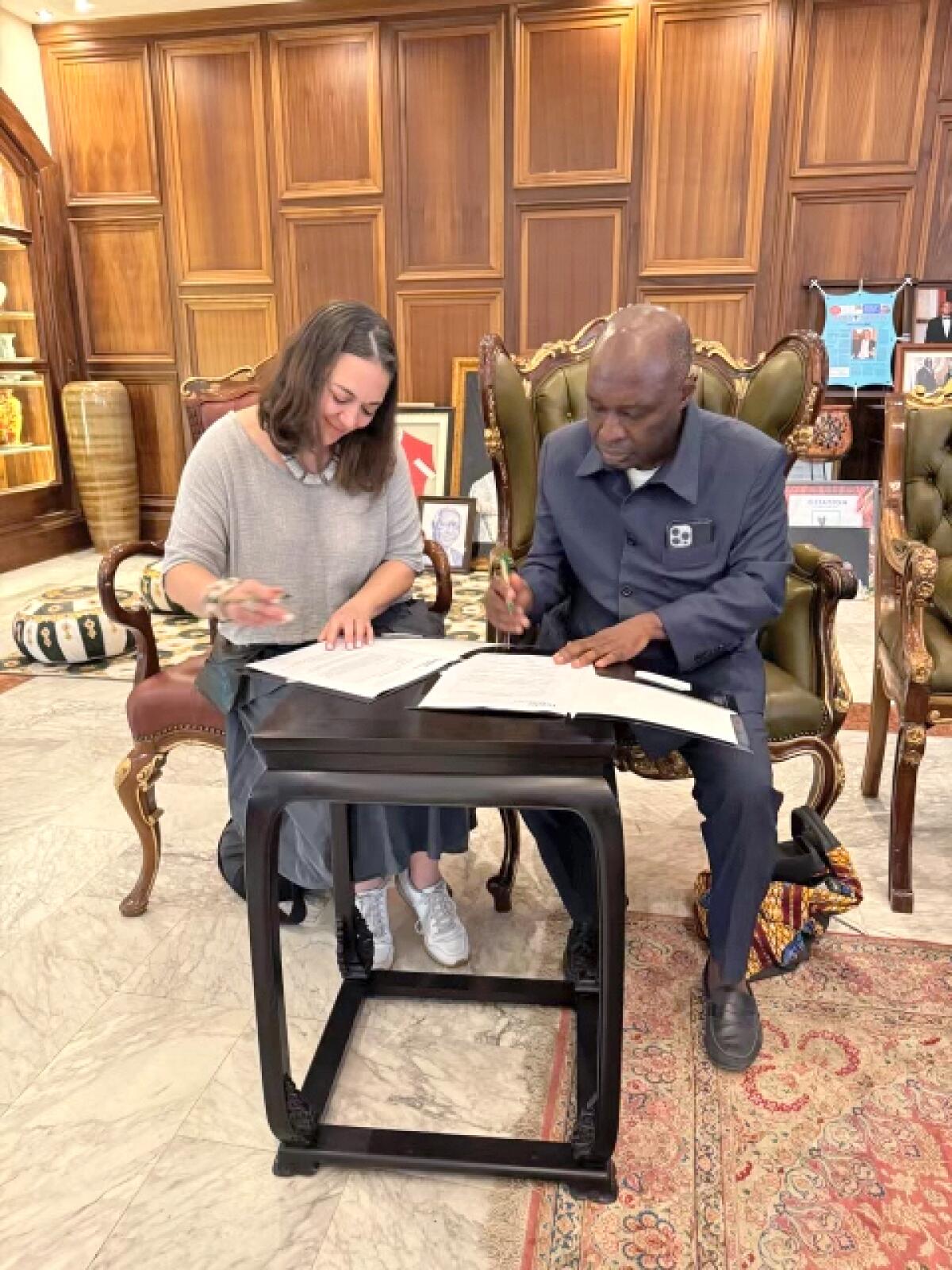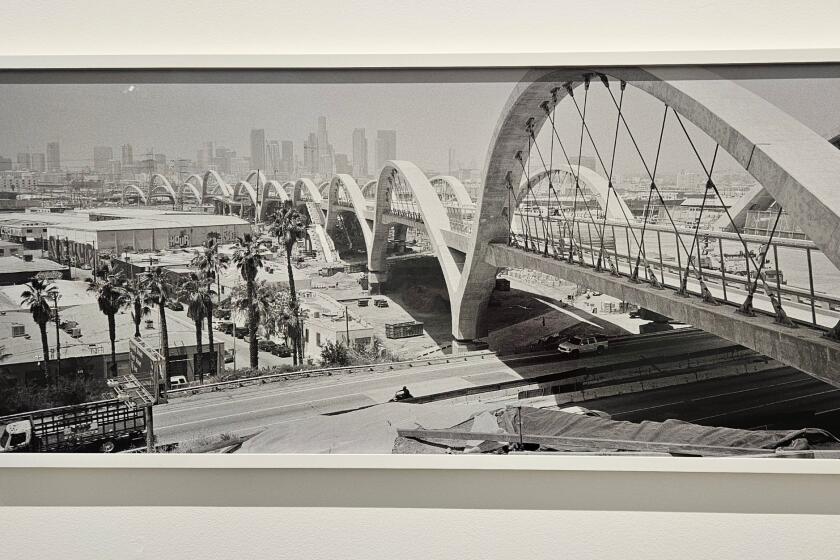In a highly unusual move, UCLA Fowler Museum is initiating returns of looted African works

- Share via
Monday is the 150th anniversary of the theft by British forces of countless gold, silver and other ornamental objects from the king’s palace in Kumasi, a former imperial city in the rain forests of Ghana’s Asante region. Troops led by Garnet Joseph Wolseley flattened the African royal city during the Third Anglo-Asante War, blowing up the palace and erasing everything in sight.
Monday is also the day on which seven of those stolen items are being formally returned to Kumasi, now a city of more than 3 million people, in an unprecedented ceremony with Otumfuo Osei Tutu II, the 16th Asante king. The UCLA Fowler Museum, in a highly unusual if very welcome move, initiated the repatriation of Asante objects that have resided in its Westwood collection since 1965. Fowler Museum director Silvia Forni, senior curator Erica P. Jones, and registrar and collections manager Rachel Raynor will be on hand for the event.
Why unusual? Most often, demands arise from outside a museum when it is discovered to have acquired stolen art. Families, foreign governments or the media raise a ruckus. By contrast, the Fowler Museum uncovered the items’ illicit history on its own and initiated the giveback. That’s the way it should work, but rarely does.

Outside pressure led the British Museum and the Victoria and Albert Museum in London to announce a deal late last month that temporarily returns 32 gold and silver artifacts to the Asante people. The two museums are prevented from completing full repatriation by outdated British laws, one passed more than 60 years ago and the other in 1984 — both were designed, at least in part, to interrupt growing claims against cultural property largely amassed during colonial expansion in the 18th and 19th centuries. Instead, a three-year loan of 15 British Museum objects and 17 from the Victoria and Albert is being made to Kumasi’s Manhyia Palace Museum, established in 1925.
The Brits are buying some time, but the loans do represent progress.

At the Fowler, on the other hand, provenance research tracking histories of ownership in the collection unearthed glaring problems. Jones and her team, funded by a Mellon Foundation grant, confirmed that theft and extortion were behind the removal from Africa of several Asante pieces — gold ornaments, an elaborate elephant tail whisk and a carved chair studded with intricate brass and iron embellishments. A gold cuff thought to have been decoration on a royal stool is embossed with lavish foliate patterns suggestive of leaves on a kum tree, a type of banyan for which Kumasi is named.
LACMA and UCLA’s Fowler Museum ponder repatriation of so-called Benin bronzes stolen during an 1897 slaughter by British colonists.
Wolseley, a much-decorated soldier who was an advisor to Confederate Gen. Nathan Bedford Forrest during the American Civil War, led the 1874 African assault; called the Sagrenti War, it was the third of five central Gold Coast wars designed to secure the mineral-rich territory for Queen Victoria. According to Fowler research, even the specific identity of who looted individual items is now known.
The elephant tail whisk, for example, which belonged to the king, was swiped by Capt. J.E. Audley Harvey of Scotland’s celebrated Black Watch infantry battalion. London shop and auction records proved useful in determining provenance details.

A treaty at the end of the Sagrenti War required the Asante king to pay 50,000 ounces of gold to Queen Victoria, adding insult to injury by underwriting Britain’s expenditure in waging the assault against him. (At $2,000 per ounce today, that’s $100 million.) Gold indemnity objects were sent to London and sold through a Mayfair crown jeweler; a half-century later, some turned up at auction. Henry Wellcome, the voracious American-born British pharmaceutical entrepreneur who amassed a collection of more than a million scientific and archaeological artifacts during his lifetime, bought several at a 1928 public sale.
The Asante items were included in a 1965 gift to UCLA of some 30,000 Wellcome Trust objects. Three years ago, the Fowler Museum announced it had determined that at least six Wellcome Trust sculptures had been stolen during an 1897 genocide at Benin City in what is now Nigeria.
A 35-year intimate survey of Catherine Opie’s never-before-shown photographs at Regen Projects in Hollywood foregrounds human connection.
The Fowler, unlike its legally encumbered London counterparts, placed no conditions on the Asante returns. Working with Tufts University scholar Kwasi Ampene, UCLA also commissioned replicas from Ghanaian artists. The originals, destined for the palace museum, belong to the Asante, who are free to do with them what they wish.
“In the case of pieces that were violently or coercively taken from their original owners or communities, it is our ethical responsibility to do what we can to return those objects,” Jones said in a statement.
For museums, provenance research is a fundamental curatorial responsibility that too often falls by the wayside. At the Fowler Museum, it is reaping important cultural dividends.

More to Read
The biggest entertainment stories
Get our big stories about Hollywood, film, television, music, arts, culture and more right in your inbox as soon as they publish.
You may occasionally receive promotional content from the Los Angeles Times.












